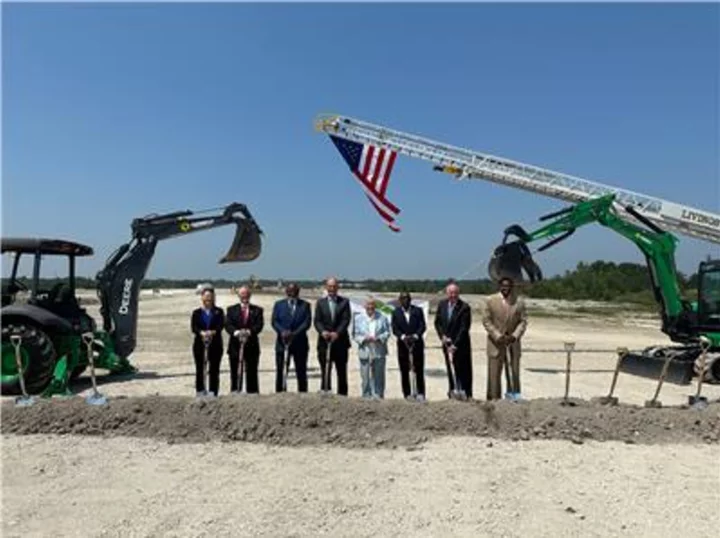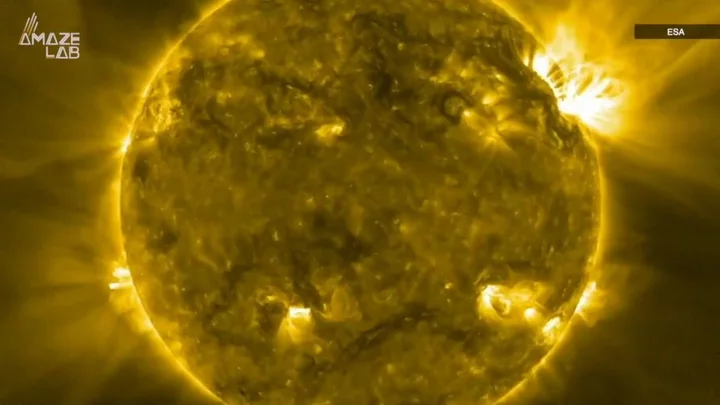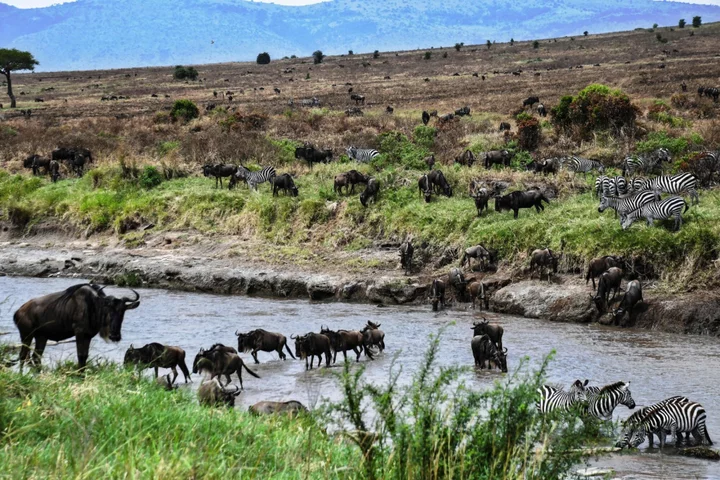The Scottsbluff solar farm in western Nebraska was built to withstand most hailstones. But the icy pellets that rained down in late June were bigger than baseballs.
The hail — part of a larger pattern of severe storms, heat and other extreme weather fueled by climate change — smashed the bulk of Scottsbluff’s glass panels. Designed to power more than 650 local homes, the facility remains out of commission over a month later. Its owner, private developer Arevon Energy Inc., is still tallying the cost.
Solar plants and wind farms are crucial weapons in the battle against greenhouse gas emissions. So it’s a cruel irony that their effectiveness is often hobbled by damage from storms, floods, wildfires and other disasters amplified by global warming. That’s making them harder to insure. Property insurance premiums for US solar facilities have soared as much as 50% over the past year, threatening to slow their rollout and derail global efforts to cut carbon emissions.
Extreme weather has “become a giant risk for the financing of these projects,” said Jason Kaminsky, chief executive officer of solar data and climate insurance provider kWh Analytics. “Anything that increases costs could slow down the deployment of renewable power needed for the energy transition.”
In areas particularly prone to natural disasters, some renewable energy companies have stopped developing projects altogether because of the cost to insure. Lightsource BP, a global solar developer half-owned by oil giant BP Plc, has so far avoided building on the US Gulf Coast near the shore because of hurricane threats. SB Energy, a renewable energy developer backed by Japan’s SoftBank Group, has passed on signing leases or acquiring a few early-stage projects in the Midwest and Texas due to hail risk.
“Not every project is insurable anymore,” said Kevin Christy, head of innovation and operational excellence in the Americas at Lightsource.
Major losses caused by recent US natural disasters have pushed up the price of all types of property insurance, according to Marsh, an insurance broker. In California, some big insurers have gone so far as to recently stop providing new property and casualty insurance policies over wildfire risk. Farmers Insurance said last month that it will pull out of Florida due to risk exposure in the hurricane-prone state.
While insurance costs are rising across the board, there’s a twist for renewable energy. As extreme weather makes solar and wind projects harder to build, it threatens, in turn, to prolong dependence on fossil fuels and contribute to the global warming that magnifies extreme weather in the first place.
Premiums for solar properties have risen even higher than the overall property insurance market, said Michael Kolodner, global renewable energy and US power leader for Marsh. In Texas and the Southeast, claims have increased and premiums have risen as much as 50% in the last year, according to a survey by BloombergNEF. In high-risk areas, insurance companies are capping their coverage at $10 million, which means large projects must seek coverage from multiple insurers, according to law firm Norton Rose Fulbright.
The problem extends well beyond the US. Japan’s average solar insurance costs are the highest in the world because of natural hazards, while extreme weather in Italy is also pushing up premiums there, according to BNEF.
Wind turbines are proving to be a bit more resilient to severe weather, Kolodner said. But they’ve also become more expensive to insure, even if the premiums haven’t gone up as dramatically.
In June, a tornado damaged five transmission poles connected to a Texas wind farm owned by Ecofin US Renewables Infrastructure Trust, forcing the project to shut down while repairs are made. And a powerful storm last year pummeled an American Electric Power Co. wind farm in Oklahoma — one of the world’s largest — damaging a turbine and sparking a fire.
Insurers like FM Global are working to determine just how resilient renewable energy projects are to storms and other intense weather.
Inside a nondescript building on a research campus in Rhode Island, FM Global employees fire chunks of ice out of a cannon at solar panels, trying to find vulnerabilities. The company is testing panels in order to make recommendations to renewable energy developers about whether they’ll be able to withstand the weather specific to a certain area. FM Global’s facility can also simulate disasters like hurricanes, floods and fires.
“A lot of areas that are ripe for solar energy are vulnerable to hail,” said Lou Gritzo, FM Global’s chief science officer. The company has identified the Rocky Mountains east to the Great Plains and West Texas as a high-risk zone.
Clean energy developers are starting to factor higher insurance costs into their business plans. SB Energy used to model $3 a kilowatt to insure a typical US solar farm, according to Jaime Carlson, head of commercialization.
Now, the company is seeing closer to $4 to $5 a kilowatt for less coverage, Carlson said. But in areas particularly prone to natural disasters, the cost estimates can be five to six times as high.
Last summer, hailstorms caused nearly $300 million in losses in Texas, nearly twice the financial hit caused by severe storms, wildfires and flooding at notable US wind and solar facilities since 2020, according to GCube, an underwriter of renewable energy projects.
At the same time, renewable energy developers across the US are facing more restrictive terms with higher deductibles and less coverage for events like hailstorms.
Emerging clean energy sources such as carbon capture and hydrogen projects are also struggling to find adequate insurance coverage, said Aaron Ratner, a venture capitalist and co-founder of Climate Risk Partners, an insurance startup. The lack of coverage is “one of the most critical bottlenecks in the sustainable energy transition,” Ratner said.
The escalating insurance costs for green power come at a critical moment. The Biden administration is offering billions of dollars worth of incentives for clean energy projects to help speed up the country’s transition away from fossil fuels. Meanwhile, climate scientists warn that the world must move quickly to reduce heat-trapping greenhouse gases in order to avoid the worst effects of global warming.
Read more: How US Green Deal Has Opened Floodgates for Subsidies: QuickTake
In areas where they’re continuing to build, clean energy developers are taking steps to adapt to heightened climate risk. For its solar farms located in hail-prone areas, Lightsource has a team of people who monitor the weather and can remotely tilt panels to protect from hail in advance of major storms, Christy said. During a recent day of exceptionally severe weather across the US Southeast, the company was able to avoid hail damage to seven of its solar farms that way, he said.
In the US West, insurers have imposed stricter standards for clearing grass and vegetation around solar facilities to reduce the risk of wildfires, Christy said.
SB Energy said it now works with an insurance broker to analyze natural catastrophe risks before investing in a facility. The company also has weather monitors and remotely controlled panel trackers for its solar farms vulnerable to hail.
“Insurance was a check-the-box exercise previously, where now it is something we think about at the very beginning of the project cycle,” Carlson said.
--With assistance from Brian K Sullivan.









